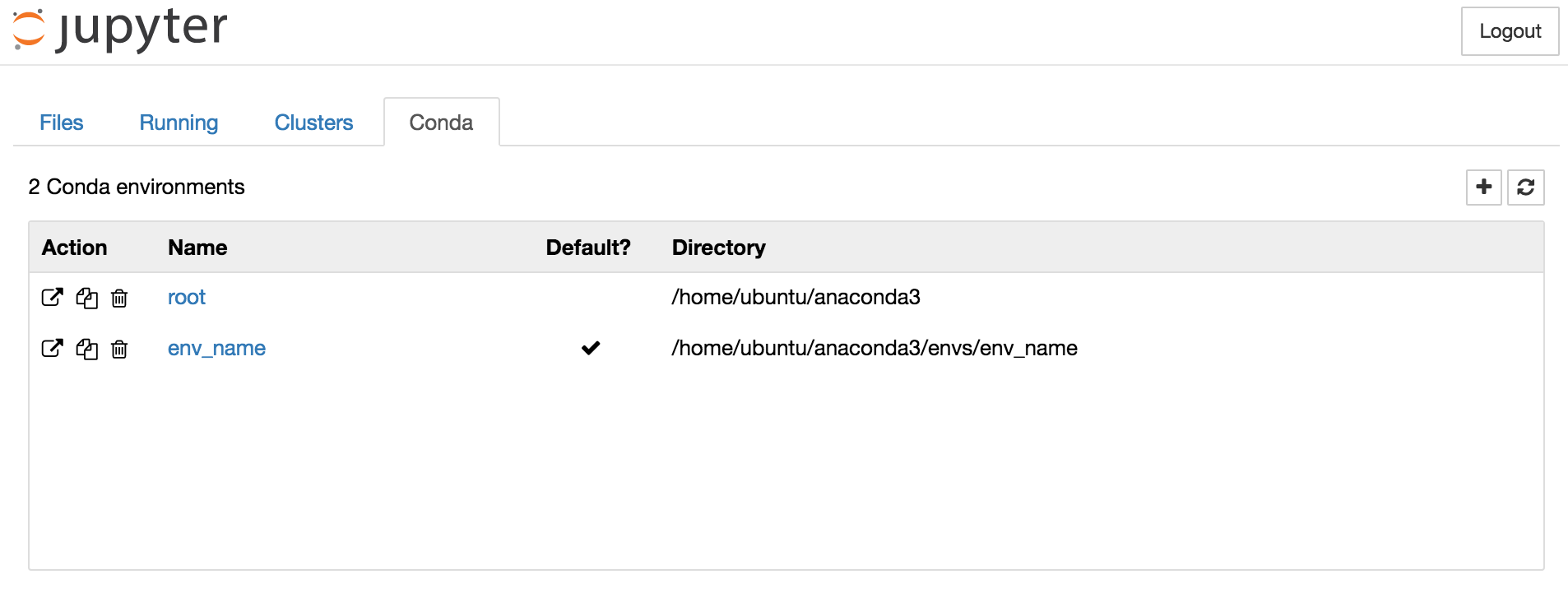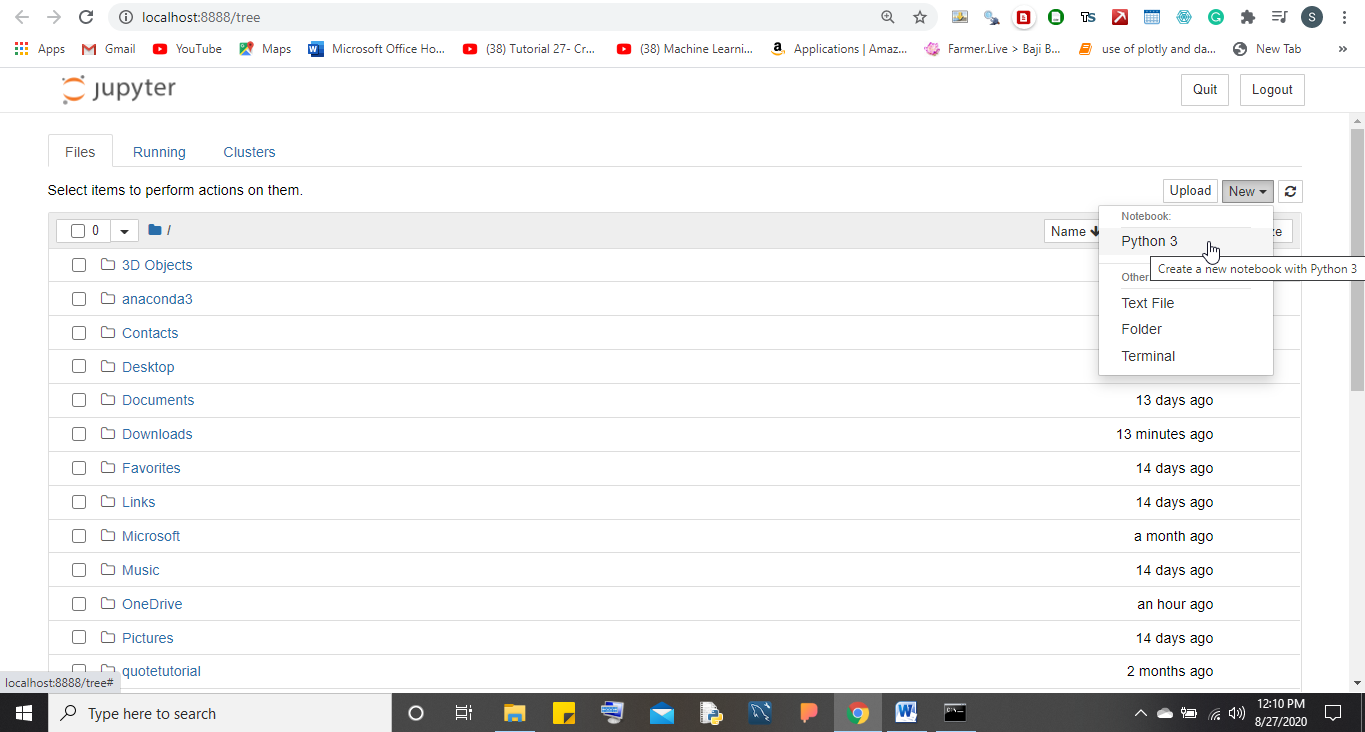

- #Anaconda install jupyter notebook how to
- #Anaconda install jupyter notebook pro
- #Anaconda install jupyter notebook code
Hit Ctrl+Shift+P and select Python: Select Interpreter.Ī Python Interpreter reads your script and translates them into Python byte code.
#Anaconda install jupyter notebook code
Visual Studio Code will load your folder. Go into the folder that you created and click “Select Folder”. Then open Visual Studio Code and select Start > Open Folder… Start by creating a new folder for your project.

I won’t cover these steps since the official documentation does a great job.
#Anaconda install jupyter notebook how to
For instructions on how to install it head over to the official Visual Studio Code Documentation. The free editor, Visual Studio Code can be downloaded from here. For example, if you’re building a solution for a client with an older version of Python and you need to match their version then this would be a valid reason to choose an older Python version.įor detailed step-by-step instructions, I defer to the Official Anaconda Documentation. I recommend installing the latest Python version unless you have a compelling reason to use an older one. Head over to Anaconda and download the installer that corresponds to your operating system.
#Anaconda install jupyter notebook pro
Feel Like a Pro – set it to a dark theme, learn a few shortcuts, work with the terminal, and watch your teammates drool while you do data science like a pro!.This feature will show you all variables, even the ones that you forgot were active.
 View Kernel Variables – instead of peeking at a DataFrame with df.head() you can use the Visual Studio Code option “Show Variables Active in Jupyter Kernel”. Extensions and Customizations – take it to the next level with extensions and customizations: Linting, AWS, and deployment, hundreds of themes, common code snippets, icon packs, IntelliSense autocomplete, HTTP servers, comments/documentation templates, git, the list goes on…. Language Support – as a general-purpose editor, Visual Studio Code can support more languages and includes language-specific extensions like linting. The Visual Studio Code way of handling virtual environments is more OS-native and easier to access and control. Virtual Environment Management – handling virtual environments in Jupyter Notebook/Labs is possible but very limited and disconnected from the source code. Full-Stack Development – machine learning models, Jupyter Notebooks, backends, frontends, APIs, and automated QA script all from one project on one editor!. Benefits of Anaconda on Visual Studio Code Skip here if you’re ready to start Predicting the Stock Market Using Machine Learning. For example, in one Visual Studio Code project I have Django, React, Jupyter Notebooks, and use Jenkins for automated deployment and QA. With Anaconda on Visual Studio Code, you can package backends, frontends, machine learning, and Jupyter Notebooks without having to deal with several projects. Setting up Anaconda on Visual Studio Code (VS Code) opens up the option for advanced integrations and workflows that accept multiple frameworks, far more programming languages, continuous development, and continuous integration pipelines. These tools are perfect if you’re only working on data science projects, but what happens when you need to integrate with a backend and a frontend all within the same project? You basically end up with a not so easy QA and deployment workflow. However, the core features of the Jupyter family of products are focused on data-science-centric tasks. If you’ve been following the evolution of iPython, Jupyter Notebook, and JupyterLab, then you know the features are only getting better and better with each evolution.
View Kernel Variables – instead of peeking at a DataFrame with df.head() you can use the Visual Studio Code option “Show Variables Active in Jupyter Kernel”. Extensions and Customizations – take it to the next level with extensions and customizations: Linting, AWS, and deployment, hundreds of themes, common code snippets, icon packs, IntelliSense autocomplete, HTTP servers, comments/documentation templates, git, the list goes on…. Language Support – as a general-purpose editor, Visual Studio Code can support more languages and includes language-specific extensions like linting. The Visual Studio Code way of handling virtual environments is more OS-native and easier to access and control. Virtual Environment Management – handling virtual environments in Jupyter Notebook/Labs is possible but very limited and disconnected from the source code. Full-Stack Development – machine learning models, Jupyter Notebooks, backends, frontends, APIs, and automated QA script all from one project on one editor!. Benefits of Anaconda on Visual Studio Code Skip here if you’re ready to start Predicting the Stock Market Using Machine Learning. For example, in one Visual Studio Code project I have Django, React, Jupyter Notebooks, and use Jenkins for automated deployment and QA. With Anaconda on Visual Studio Code, you can package backends, frontends, machine learning, and Jupyter Notebooks without having to deal with several projects. Setting up Anaconda on Visual Studio Code (VS Code) opens up the option for advanced integrations and workflows that accept multiple frameworks, far more programming languages, continuous development, and continuous integration pipelines. These tools are perfect if you’re only working on data science projects, but what happens when you need to integrate with a backend and a frontend all within the same project? You basically end up with a not so easy QA and deployment workflow. However, the core features of the Jupyter family of products are focused on data-science-centric tasks. If you’ve been following the evolution of iPython, Jupyter Notebook, and JupyterLab, then you know the features are only getting better and better with each evolution.







 0 kommentar(er)
0 kommentar(er)
